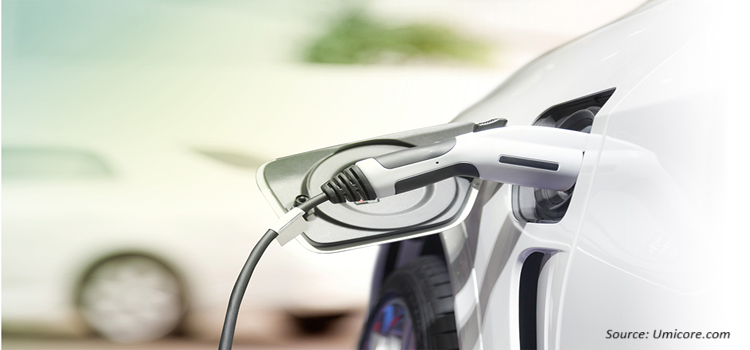The automotive industry experiences its biggest transformation since its foundation when electric vehicles lead the way as the principal focus. Over the last ten years the International Energy Agency reported a substantial rise in electric car market sales based on their 2024 outlook. The EV sales jumped from 201,000 in 2013 to 13.8 million in 2023, showcasing the intensified transition towards EV adoption, driven by ever-evolving technologies and immense environmental concerns. EV technology operators are focusing on advancing their systems through environmental sustainability that aims to deliver better performance and improved user experience. The latest technological integration in EVs that are shaping the future of transportation are:
Solid-State Batteries
The transportation sector views solid-state batteries as one of the top new technologies for electric vehicles. The solid-state batteries utilize a solid-based electrolyte, unlike lithium-ion batteries which function with liquid electrolytes. These batteries provide enhanced energy capacity, accelerated charging and protection against ignition incidents while extending total operational time. Happy homeowners can look to solid-state batteries for more affordable prices, enhanced efficiency along with greater driving range between charges. As an example, in October 2024, Stellantis and Factorial advanced their partnership to accelerate the development of EVs using Factorial’s solid state battery technology. Similarly, the Japanese company Honda continues to advance solid-state battery technology through its establishment of testing facilities at its production line in Japan for its proprietary battery designs. By establishing a production line Honda demonstrates its dedication to electric vehicle transformation through solid-state batteries which offer cost reductions and higher energy capacity and faster charging than conventional lithium-ion batteries.
Advanced Driver-Assistance Systems
Electronic automotive driving systems are currently being integrated at a fast pace into all electric vehicles. EVs are integrated with ADAS including adaptive cruise control, lane-keeping assist, automatic emergency braking, and self-parking features. Such product advancement is creating driving systems that eliminate the requirement for human driver involvement. The classic demonstration comes from Tesla that shows electric vehicles drive the progress of automation through their self-driving capabilities. Moreover, General Motors intends to reach autonomous personal transportation by establishing advanced driver assistance systems which serve as a foundation for complete self-driving vehicles.
Vehicle-to-Grid Technology
The electric vehicles fitted with Vehicle-to-Grid technology are power storage devices that can feed power grids with electricity. The integration supports power balance requirements particularly in regions that utilize high level renewable sources such as solar energy and wind power. V2G systems operate as grid stability protectors through their function as energy storage devices that provide electricity during periods of peak usage or minimal renewable resources availability. Companies like Nissan and Honda collaborate with energy suppliers to test V2G technology towards developing strong sustainable power networks. The Nissan company scheduled October 2024 as the launch date for affordable onboard bi-directional charging systems to be released in 2026 on certain EV models. EV drivers will access Vehicle-to-Grid capability to distribute their car power to their homes or sell electricity to the grid.
Ultra-Fast Charging and Wireless Solutions
One of the biggest concerns for EV adoption is charging time, which is being addressed through ultra-fast charging solutions. High-power DC fast charging stations are now capable of delivering 350 kW or more, reducing charging times to as little as 15-20 minutes. Wireless charging technology is another emerging innovation that enables EVs to charge without physical plugs, using inductive charging pads installed in garages, parking lots, or even roadways. These advancements enhance convenience and eliminate range anxiety, making EVs more accessible for daily use. As an example, InductEV, a wireless EV charging specialist, will install its high-power inductive chargers at the Port of Long Beach in partnership with International Transportation Service (ITS).
Artificial Intelligence and Smart Connectivity
Artificial intelligence serves as a vital force to improve both performance quality and safety features of electric vehicles. Through predictive maintenance improved by artificial intelligence technologies vehicles can diagnose potential flaws as the system identifies them before equipment breakdowns happen. AI-based energy management systems optimize battery performance, enhancing efficiency by dynamically adjusting power consumption. Production facilities can send vehicle software upgrades through wireless systems that eliminate the need for car owners to visit service centers during update processes. For example, Lucid Motors, a maker of electric vehicles, has introduced the Lucid Assistant, a voice AI capability for its electric cars. This voice assistant, operated without hands and driven by SoundHound AI, enables drivers to manage vehicle features via voice commands.
Lightweight Materials and Aerodynamic Designs
Lightweight materials like carbon fiber, aluminum alloys, and high-strength steel help cars go farther and use less energy by reducing weight. Auto producers create cars with lowered drag features consisting of active grille cutters together with undercarriage panels and minimalistic body styles. This improves airflow, allowing EVs to travel longer distances on a single charge while maintaining performance and stability. As an example, the production of electric vehicles at Suzuki will include lightweight parts and small battery cells together with the elimination of rare earth materials from manufacturing. Throughout the production process the company will work on minimizing energy usage while transitioning to circular economy principles.
Conclusion
Technological advancements impact the EV market, allowing for increased efficiency, intelligence, and sustainability. A number of improvements in battery technology, charging infrastructure, AI, and autonomous driving are accelerating the way toward an electric future globally. As innovations seep into the ether, EVs are poised to dominate the automotive industry, driving shifts in mobility and contributing to an ecologically friendly and smarter transportation ecosystem.
ABOUT THE AUTHOR
Swagata Sarkar is an enthusiastic and dedicated researcher with 3 years of experience. She is committed to helping clients navigate complex business challenges by offering actionable insights through thorough research. Swagata has a strong interest in various sectors, including Agriculture, Energy & Power and ICT & Media and she aims to deliver valuable perspectives in these areas. Beyond her research, Swagata also enjoys articulating her thoughts through articles and blogs while finding solace in literature and art, often immersed in reading and painting. The author can be contacted at info@nextmsc.com






